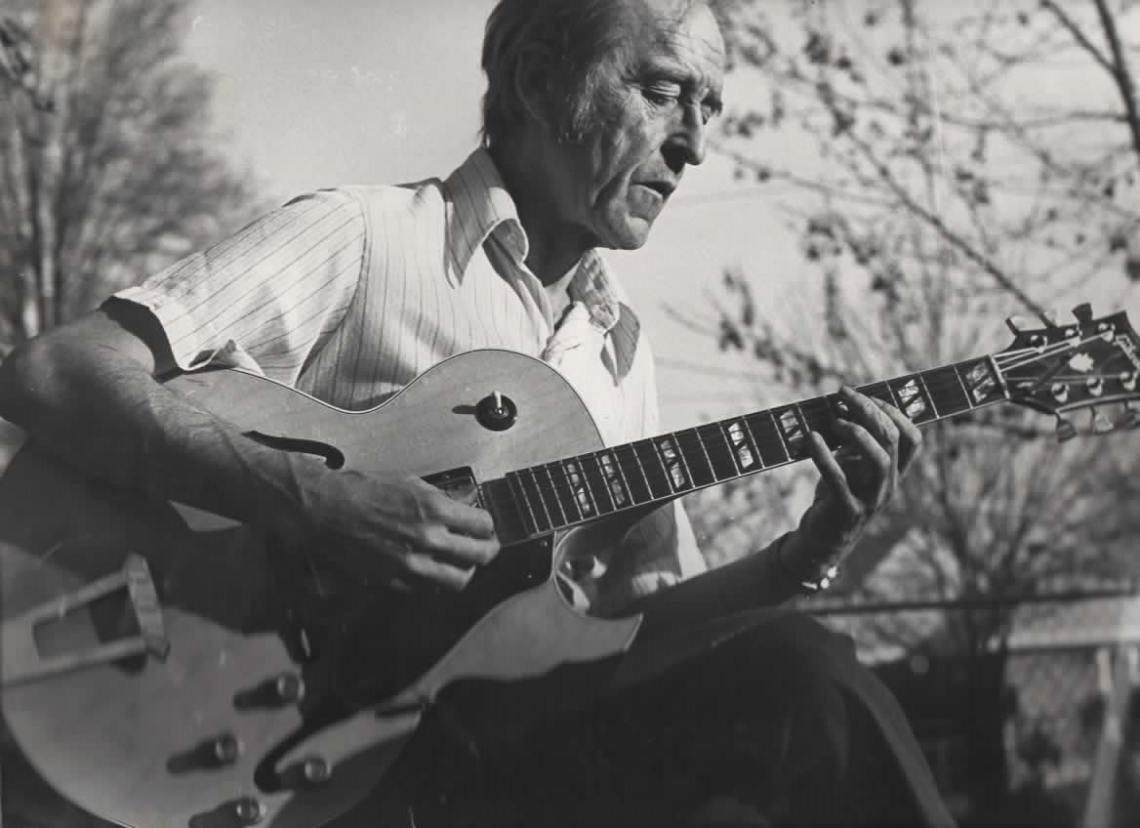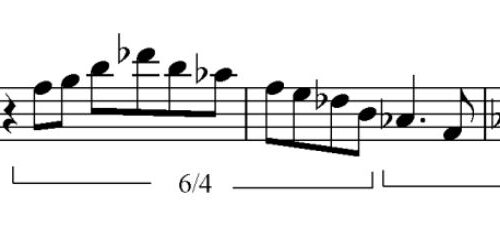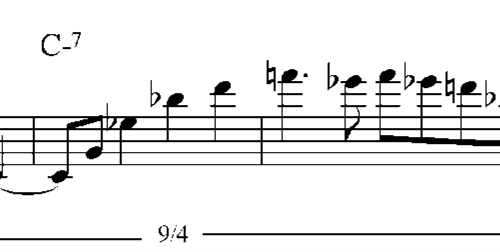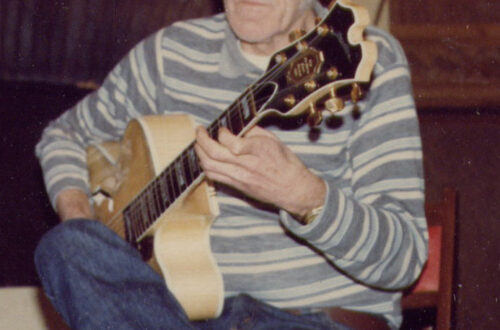In jazz improvisation discussions, it’s easy to get caught up in the small stuff. It seems particularly prevalent in piano and guitar instruction: what scale, what chord change, what scale over what chord change, what jazz lick here, what jazz lick there…
Here a lick, there a lick, everywhere a jazz lick, E-A-D-G-B —E!
To avoid this, in my last video and article I looked at subtler aspects of the Raney style, like asymmetry and sequence, and the part they played in his development of musical ideas, rather than hyper-focusing on the notes themselves. But as I reflected on this, was this still just another jazz mastery shell game?
This relates to the quandary I had that kept the Jimmy Raney Book on the shelf for so long. This gap I began to feel midstream, how to get from analysis and explained concepts – to how he actually played these things – seemingly so effortlessly. And ultimately how to help fulfill the goals of aspiring improvisors seeking to play like him, or at least play better through his model.
I got past this by thinking about my original intentions for this book, simply presenting and suggesting avenues that perhaps had not been thought of and seeing what happens. This was my father’s goals for the original portion of this book, which ironically he couldn’t get published. Additionally, since my father’s passing, there has been much rediscovery of his playing, instruction and even philosophy online. Here are some great samples:
Jimmy Raney Live with Cal Collins (1987)
Jimmy explains his techniques:
Jimmy explains the mystery and contradictions of the creative process:
The last video might be the most instructive of all, in that it illuminates, as much as possible with words, what is going on during the best moments of improvisation. It’s elusive when you try to pin it down, you can’t plan it or will it to happen, you just have to follow it. But when it happens you know it.
As a teacher, that is the way my father worked. Like a zen master, he gave you things to think about without spelling out shortcuts which would likely not get to the results. At his memorial in 1995 I recounted how he gave me a lesson in musical phrasing by speaking gibberish to me and asking me if I understood! That lesson stuck with me. You have to absorb the philosophy and try to bring the same subtle spirit to your playing and ultimately teach yourself … grasshopper.
Thinking on this extra-musical methodology, teaching improvisation at a high level has a lot in common with mastery of the spoken word and oratory. In these arts, the craft is governed by how thoughts are unpacked, where an idea is stated clearly, without excess and then related to and enhanced by the next idea. As your words create momentum, they reach a cadence, and a stickiness with the audience begins, enticing them to respond to the ideas that resonate. Audience members in turn, have an opportunity to reflect those resonant ideas themselves once set on the right path. It’s not a guarantee, but the chances are better.
Although I’m not by any measure a poet, I think this quick vignette demonstrates some of these concepts; I take a familiar saying through a repetition sequence, and imprint a sticky idea at the cadence by changing the final word repetition to a rhyme, with an emotional emphasis.
What we choose to see in others
Reflects what we see in ourselves
When we see ourselves more clearly
We can see others more clearly
And as we embrace ourselves,
We then embrace others more dearly
The artistic sympatico between literary and musical traditions, is perhaps best expressed in Jimmy’s quote from this video where he likens what E.B White said about the oft misguided emphasis on grammar and syntax in prose to that of chords and scales in music.
“To be very honest with you, playing scales and modes or 7th scales… in the last analysis is here (points to his ear). Your ear guides you or fails to guide you as E.B. White says about prose and all the rules of grammar and syntax ain’t gonna help if you don’t hear it . . . It’s good to know all that stuff but don’t think it will make you play.”
With all these ideas in mind, I proceed on with more excerpts from The Jimmy Raney Book, Chapter 9, regarding developing musical ideas. This relates to the prior article and video regarding sequence, but it goes further, introducing musical concepts like diminution, augmentation, call and answer and harmonic rhythm into the mix. The emphasis here is more on how to utilize all the tools of development, how to reach out and grab the listener effectively by creating momentum and cadence, give them a sense of having traveled somewhere, feel satisfied for having done so and then to have them want more.
These two phrases demonstrate the diminution concept, where larger note values contract towards smaller ones, creating acceleration towards a desired point in the music. What’s important to stress in these lines is the synergy between rhythm and melodic line. This idea is often frustratingly forgotten, where rhythm and melodic line seem to be treated like separable entities. To my thinking melodic content has no form without it’s marriage to the rhythm it’s cast in. Listen carefully how Jimmy achieves this. Below is from Jimmy’s “Chewish Chive and English Brick” from Raney ’81:

This from the beginning of above YouTube video solo to “Just Friends”:

There is another technique that he is particularly deft at: “antecedent-consequent” phrasing, commonly known as question-answer phrasing. The precedent for this melodic technique is centuries old, however its use in modern popular music, jazz and blues is quite common.
Here’s Louis Armstrong’s on West End Blues
And here’s is Jimmy wonderful phrase over “Three Little Words” from his Music Minus One Play Along from 1951 with what I find to be strong echoes of Armstrong’s phrase.

And here’s yet another from his solo break to “Cross Your Heart”:

One of the most masterful and cohesive statements I’ve heard Jimmy make, utilizing question-answer, augmentation, diminution and sequence, is on his intro to “The Song is You” from The Master. The augmentation and diminution are mixed together as the opening triads begin to quicken in rhythmic value towards eighths, but note they also increase in phrase length, then finally return to augmented rhythmic values as they move towards the head melody.
However, my main takeaway from this – to harken back to the earlier paragraph’s discussion on the oratory link to music – is how this intro feels like an “introductory speech” that dovetails seamlessly to the song’s melody on the 7th of C major. You could easily put this intro to words. In fact, let me try it:
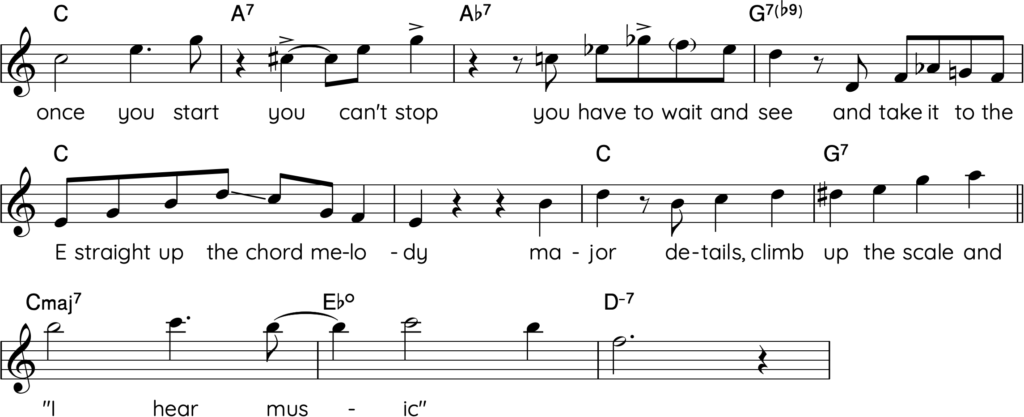
Having watched my father up close, I feel a force behind what he does. It’s almost a seduction as he draws you in. Your body tenses in anticipation, asking, what is he going to play next? I know it’s going to be something good! Although I am his flesh in blood, I am by no means alone in this regard. I have had hundreds of discussions with all types of musicians that have had the same experiences of rapt attention listening to him, that same feeling of sweet gut tension. The music speaks through him and never falters; he never plays anything frivolous or for effect. It is humbling for those who make that mistake in his company on stage.
To get to the heart of it (literally), there is way more to music then descriptive theoretical terms. They can be useful tools to find a way into the music but it’s also helpful to zoom out and tap into the creative forces behind the music and draw analogies to other arts or even the sciences (as noted in video #3), especially if you’re stuck. Maybe think about it less, and as my father put it in his picking and phrasing video, leave it up to “him” – your musical unconscious mind – to find the answers. Once you have them, then you can break them down analytically to your heart’s content.
The musical score examples shown here are from the recently published, The Jimmy Raney Book where I dive deep into Jimmy’s stylistic nuances. It is available in spiral bound and pdf format at Chuck Sher’s site. It’s also available on Amazon if you prefer. Pick up a copy!
Discover more from The Raney Legacy
Subscribe to get the latest posts sent to your email.
